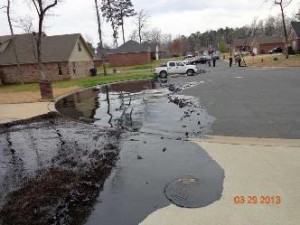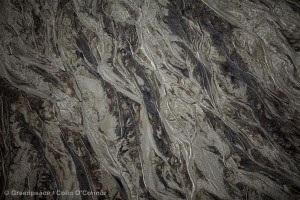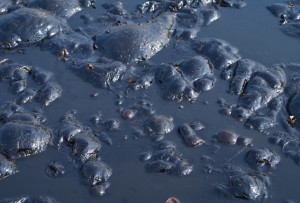Keystone XL Is a Dirty Deal for America
- Submitted by: Love Knowledge
- Category: Environment
The post Keystone XL Is a Dirty Deal for America appeared first on WhoWhatWhy.
President Donald Trump’s announcement that he approved the controversial Keystone XL pipeline was welcome news for a Canadian company, foreign steel manufacturers, some rich guys, anybody who thinks the planet should be warmer and 35 ordinary Americans. It’s not a good deal for the rest of the country.
“This announcement is part of a new era of American energy policy that will lower costs for American families — and very significantly — reduce our dependence on foreign oil, and create thousands of jobs right here in America,” Trump said Friday.
What the president did not say is that the vast majority of the jobs created by the construction of the pipeline will be temporary. A 2014 State Department study indicated that Keystone XL would create only 35 permanent jobs.
As WhoWhatWhy has shown, that is not the only issue with the pipeline. We thought that Trump’s announcement provided a good opportunity to revisit our previous coverage, which identified many of the problems that make the construction of Keystone XL a terrible decision on many levels.
This is Part 1 of a 2-part Series
(See Part 2 here: A Cautionary Tale—Tar Sands Oil and Health)
Debate continues to rage over whether the Obama administration should approve TransCanada Corporation’s contentious Keystone XL pipeline.
Meanwhile, little attention has focused on the impact of tar sands oil spills in far-flung states. Two accidents, in Arkansas and Michigan, raise largely unaddressed questions about the true cost to human health and the environment — and the high cost and difficulty of cleanup. But there are other issues as well, ranging from the political and economic impact to the behavior of the corporations involved to the very nature of the substance itself.

Pipe Dreams — or Nightmares?
The more recent of these disasters came on March 29, when a 22-foot gash opened in ExxonMobil’s 65-year-old Pegasus pipeline. It dumped some 210,000 gallons of tar sands oil into the streets of Mayflower, Arkansas, and into nearby Lake Conway.
More than six months after that lake of viscous tar sands crude engulfed a subdivision, many homes — both within the core spill area and at the periphery — stand deserted.
Among the few inhabitants who remain are those too old or too poor to leave, while many others simply have no place else to go. The streets are dotted with For Sale signs that beckon no buyers. Many people are ill, suffering from respiratory problems, chronic headaches, debilitating fatigue and other complaints.
Environmental scientist Wilma Subra says the symptoms are consistent with known effects from exposure to petroleum products — and to the volatile chemicals used to dilute the gummy Canadian oil so it can flow through a pipeline.
While cleanup continues, the legal battles have just begun. Among them are class action and civil suits, plus a lawsuit filed by the US Justice Department and the state of Arkansas for alleged violations of state and federal environmental laws, including the Clean Air and Clean Water Acts.
ExxonMobil Lied About What Spilled
For weeks after the spill ExxonMobil withheld crucial information about the nature of their product from state and local officials. The oil giant insisted it was conventional crude — which is cheaper and easier to clean up — while downplaying the amount and extent of contamination. Early on, company officials claimed that nearby Lake Conway was oil-free — though internal emails showed that they knew otherwise.

The March 2013 Exxon Tar Sands Spill in Mayflower, Arkansas
A Billion Dollar Spill?
Far to the north, 40 miles of Michigan’s Kalamazoo River shimmer with a slick rainbow sheen. It’s the toxic legacy of the largest, most expensive onshore oil spill in US history.
On July 26th, 2010, Enbridge Energy’s “Line B” pipeline ruptured, belching over a million gallons of tar sands oil into a field near Marshall, Michigan. Some of that flowed into nearby Talmadge Creek and on into the Kalamazoo—sites of previous industrial dumping and heroic cleanup efforts.
Three years later, so much heavy Canadian crude still coats parts of the river bottom that last March, the the U.S. Environmental Protection Agency (EPA) ordered Enbridge to resume dredging the river.
The agency estimates that perhaps 180,000 gallons remain submerged, “plus or minus 100,000 gallons.” Federal fines of $3.7 million pale beside actual cleanup costs, which now exceed a billion dollars.
Enbridge contends it spilled a mere 843,000 gallons — although EPA evidence shows far more. The company waited a week to disclose that the spill was not ordinary oil, but instead thick tar sands oil. Some 320 people have reported health problems, and litigation is ongoing in a host of lawsuits.
Even these accidents, however awful the consequences for local residents, fail to paint a picture of the potential for catastrophe in the Keystone XL Pipeline project.
If completed, this pipeline would funnel nearly 35 million gallons of Canadian tar sands oil — a day — from Alberta to Texas Gulf Coast refineries. Along that 1,179-mile route, the line would cross six states in America’s heartland, and traverse the Ogallala Aquifer that provides drinking water for two million people.
Though the location of oil and gas pipelines is public information, neither TransCanada nor the State Department has revealed Keystone XL’s exact route. But the general path is clear. Keystone will cross a remarkable 1,748 bodies of water in all, including the Yellowstone and Missouri Rivers.
In an accident, numerous toxic chemicals would be released, including benzene, a known human carcinogen. One at-risk ecosystem, Nebraska’s fragile Sandhills region, lies along the Keystone route, with ancient dunes so permeable that nearly 100 percent of rainfall enters the shallow Ogallala Aquifer. This means that a relatively minor spill can have major consequences.
***
While spills are the most immediate threat posed by the pipeline, much of the Keystone debate has focused on climate change. NASA climatologist James Hansen has called Canadian oil sands crude “one of the dirtiest, most carbon-intensive fuels on the planet.”
How bad? It emits 14 to 20 percent more greenhouse gases than conventional crude, according to a congressional report. But the environmental group Rainforest Action Network (RAN) says it’s much, much worse:
Tar sands oil is the worst type of oil for the climate, producing three times the greenhouse gas emissions of conventionally produced oil because of the energy required to extract and process tar sands oil. . . increased greenhouse gas emissions associated with tar sands development is the main reason Canada will not meet its Kyoto reduction commitments.

Oil or “Molasses”
Tar sands oil should not be confused with conventional crude. Alberta’s oil is a gelatinous mix of tarry petroleum and sand, known as diluted bitumen or “dilbit.” It’s often likened to asphalt: it is so thick and gooey that it won’t flow through a pipeline on its own. For transport, it’s thinned with liquefied natural gas and a range of chemicals, some of which are extremely toxic.
It’s far stickier than other petroleum products — and it sinks in water, which is why oil sands spills are extremely difficult to clean up, said Stephen K. Hamilton, a Michigan State University aquatic ecology professor who’s advising the state and the EPA on the cleanup in Marshall. “The bitumen reverts to its molasses-like nature once the diluent evaporates, and is nearly impossible to remove from surfaces…and river banks,” he said. “The EPA estimates that a significant fraction of the spilled oil remains in the sediments even after all the time and money invested in cleanup, and I am sure we will never get it all out.”

Dirty Oil, Dirty Politics
Legally, bitumen is not even considered oil. In 2011, the Internal Revenue Service (IRS) ruled that “the term ‘crude oil’ does not include “synthetic petroleum.” That distinction exempts Enbridge, ExxonMobil, TransCanada and other companies that transport tar sands crude from paying the 8-cents-per-barrel petroleum excise tax. Thus, the companies shipping a substance that’s more toxic and harder to clean up than standard petroleum products do not even have to pay into the Oil Spill Liability Trust Fund, which was created by Congress in 1986 and enacted four years later in response to the Exxon Valdez disaster.
Cleanup of the massive Deepwater Horizon oil spill and a host of smaller accidents drained the fund to risky levels, according to a Government Accountability Office report. As of March 2011, the fund had shelled out $629.5 million for Deepwater. Liability for oil companies caps at $350 million; the fund covers the rest, up to a billion dollars per incident.
But tar sands oil gets a free ride, with transport companies putting nothing aside to help pay for pipeline breaks or other accidents.










Comments (0)